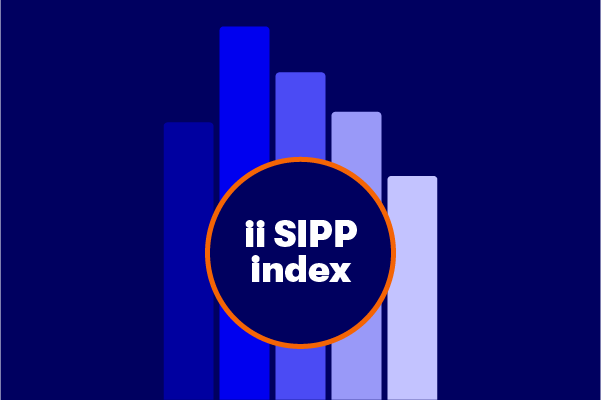SIPP Index: a new report from ii
Q1 2024: passive investing boom as female investors outperform.
19th June 2024 12:25
by Alice Guy from interactive investor

interactive investor, the UK’s second-largest investment platform for private investors, has launched a new report: the ii SIPP (Self-invested Personal Pension) Index. In a rapidly changing and increasingly complex investment landscape, this new index will provide a barometer of how SIPP customers are investing and positioning their pension portfolios during their working life and in retirement.
- Invest with ii: Open a SIPP | ISA vs SIPP | SIPP Cashback Offers
The data released today for Q1 2024 explores how interactive investor SIPP customers invest throughout their pension investing journey – such as in accumulation* compared to in drawdown* (see notes to editors).
The new ii SIPP Index will be a half-yearly index with data from Q1 and Q3 each year.
You can download the full research at ii SIPP Index - interactive investor.*
Key findings for Q1 2024:
Passive investing, ETFs and funds
- SIPP customers in accumulation and drawdown increased their holdings of passive tracker funds during the past two years (between Q1 2022 and Q1 2024), with seven out of the top 10 holdings in accumulation now passive funds and five out of 10 in drawdown
- SIPP customers increased their weighting to ETFs, funds and other investments (including individual bonds and gilts) and reduced their allocation to investment trusts and cash between Q1 2022 to Q1 2024.
Drawdown versus accumulation
- Drawdown customers have a higher exposure to investment trusts and funds and a lower weighting to cash than those in accumulation
- Funds are the biggest holding on average across SIPP portfolios in all but the oldest age group, while younger SIPP customers have a higher weighting to ETFs than older customers.
Female investors outperform
- Female SIPP customers outperformed men over the last two years in all age categories, with female SIPP customers under 56 achieving 11.5% growth in the last two years, compared to 10.9% for men
- Female SIPP customers have a higher weighting to investment trusts and a lower weighting to individual shares than male SIPP customers.
Alice Guy, Head of Pension and Savings, interactive investor, says: “The pension landscape is complex, but investing in your pension doesn’t need to be complicated, and our customers are increasingly favouring simple global funds and ETFs as part of their pension portfolio. This trend echoes the ongoing popularity of tracker funds with our wider customer base, as part of a balanced portfolio.
“With women’s pensions often lagging due to lower lifetime earnings, it’s great to see their pension portfolios performing so well in the last couple of years, giving them a boost, particularly with rising living costs. It’s striking that women invest significantly more in investment trusts and less in individual shares than male SIPP customers, which may have contributed to this two-year outperformance.”
Kyle Caldwell, Funds and Investment Education Editor, interactive investor, says: “Passive funds, known as index funds or exchange-traded funds (ETFs), continue to become more and more popular. Passive funds provide a low-cost way to ‘own the world’ and offer investors exposure to exciting sectors, such as technology. For me, as well as the low fees, it is the simplicity of the approach that investors are drawn to.”
Notes to Editors
Accumulation: customers who have not yet taken income from their SIPP but may have taken a tax-free lump sum.
Drawdown: customers who have taken income from their SIPP.
Important information – SIPPs are aimed at people happy to make their own investment decisions. Investment value can go up or down and you could get back less than you invest. You can normally only access the money from age 55 (57 from 2028). We recommend seeking advice from a suitably qualified financial adviser before making any decisions. Pension and tax rules depend on your circumstances and may change in future.
These articles are provided for information purposes only. Occasionally, an opinion about whether to buy or sell a specific investment may be provided by third parties. The content is not intended to be a personal recommendation to buy or sell any financial instrument or product, or to adopt any investment strategy as it is not provided based on an assessment of your investing knowledge and experience, your financial situation or your investment objectives. The value of your investments, and the income derived from them, may go down as well as up. You may not get back all the money that you invest. The investments referred to in this article may not be suitable for all investors, and if in doubt, an investor should seek advice from a qualified investment adviser.
Full performance can be found on the company or index summary page on the interactive investor website. Simply click on the company's or index name highlighted in the article.